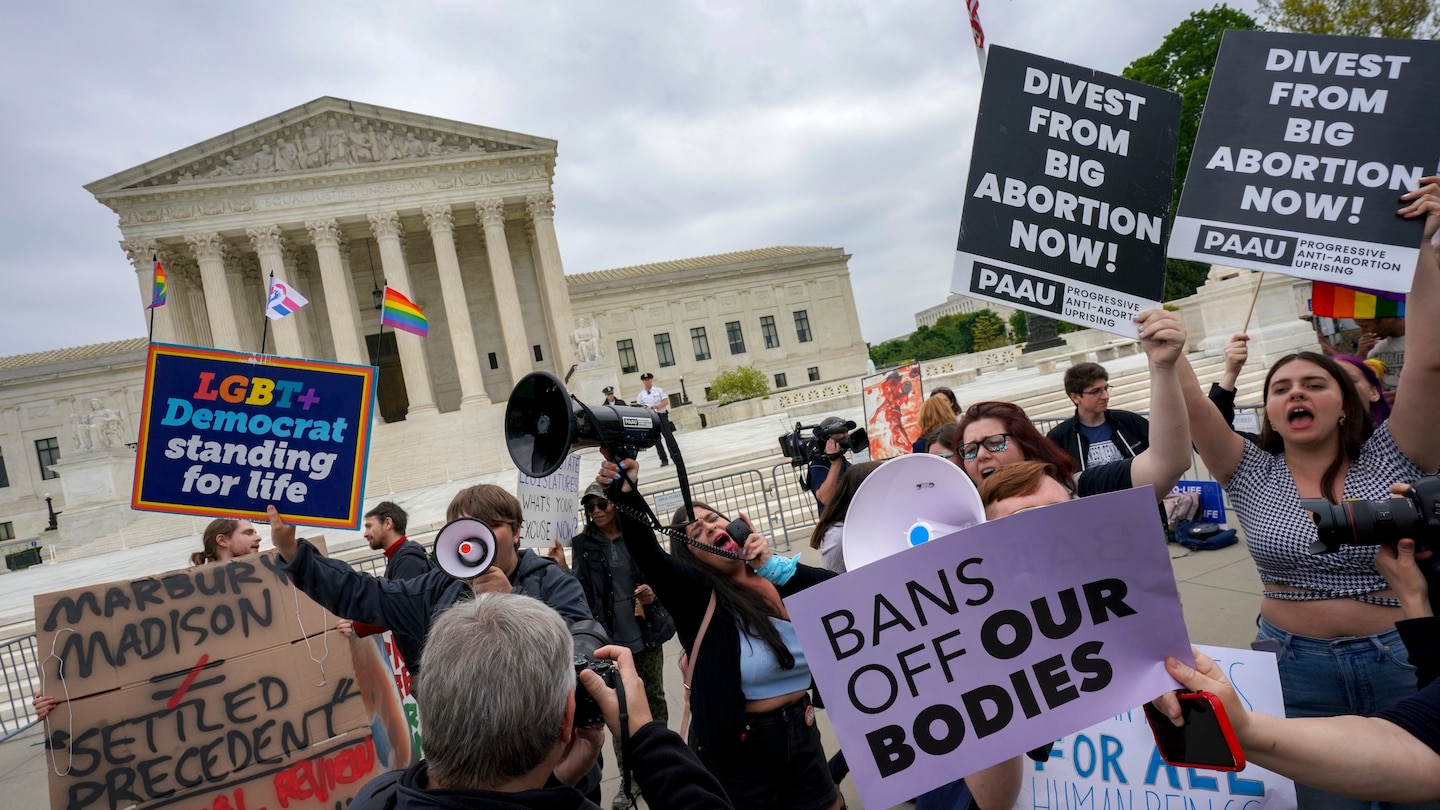The direction of the movement changed again when a New York businessman and television personality suddenly stormed his way into the 2016 Republican presidential nomination fight. With a documented personal life that did not lend itself to evangelical support, Trump made overturning Roe v. Wade a centerpiece of his campaign, at one point even suggesting that there needs to be “some form” of punishment for women who seek the procedure before backtracking.
A 49-year crusade: Inside the movement to overturn Roe v. Wade

The Trump Era
At a lunch with more than a dozen others that year at the powerhouse law firm Jones Day, Trump said he wanted to make the Supreme Court a campaign priority, surprising some in the room, including Leo, a devout Catholic who regularly visits the Vatican. Leo told others it was easy to come up with list of judges that would please the Republican base because there were decades of conservative lawyers in the pipeline.
“The success of this movement has been the result of sharp and unwavering focus, growing public sentiment against overreach by judges, and consensus among conservative activists around a single principle that having judges who respect the limits on their power and who enforce the limits on the power of the rest of government, as set forth in the Constitution, is the best way to preserve the dignity and worth of all people in the long run,” Leo said.
Trump would benefit from the fact that when Scalia died unexpectedly in February 2016, McConnell immediately announced from a trip in the Virgin Islands that he would not replace him with Obama’s nominee to the Supreme Court. McConnell’s critics called the move craven, and even some Republicans wondered if he could hold.
Abortion rights leaders were furious. “They broke all the rules,” said Hagstrom Miller, who testified against Justice Neil M. Gorsuch during his confirmation hearings. “It just feels like they lied and cheated and stole those really important roles, and now we can’t rely on the justice system.”
Gorsuch, Trump’s first Supreme Court nominee, was one of those included on the first list of six people that Leo had brought to Trump. Leo went to the White House in 2017 with a second list of five proposed candidates that included Brett M. Kavanaugh and Amy Coney Barrett, who would become Trump’s next two picks for the high court, replacing the retiring Kennedy and the late Ruth Bader Ginsburg.
Leo, McGahn and McConnell became a team, working to keep the judicial nominations effort moving even as other parts of Trump’s term fell victim to internal fighting. The three men usually agreed, with McGahn and Leo, among others, searching for nominees, and McConnell quickly confirming them. McConnell credited Trump’s advisers for the picks and Trump himself for “signing off on them.”
Trump would frequently ask advisers if his administration was setting records for judicial nominees, and if judicial candidates were “tough” and “looked the part,” according to multiple people familiar with the conversations who spoke on the condition of anonymity to reveal internal discussions. He never veered from the lists of candidates suggested by Leo and others, they said.
Josh Holmes, a McConnell adviser, said it was an “eternal campaign” to “keep the accolades rolling in so Trump would stay interested in the topic.”
“Part of McConnell’s goal was to make sure that Trump was getting the accolades that he needed to keep on doing what he was doing,” Holmes said. “There was no shortage of effort to raise the profile of the judges issue so Trump would continue to have interest in it. Every time I saw Trump privately, he’d say, Mitch McConnell. Judges. Judges. Judges. The only thing he wants is judges.”
A spokesman did not respond to a request to interview Trump for this story. Leo found he had extensive access in the White House, and that the judges issue moved quickly compared to previous White Houses, he told others.
After Gorsuch’s confirmation in 2017, Trump was delighted by the progress. Flying on Air Force One, Trump raved to McConnell and others about what a good nominee he had been, according to Rep. Garland “Andy” Barr (R-Ky.), who told the story on the “Ruthless” podcast last week.
“And he went on for a pretty good while with his monologue about how this was the greatest choice ever to the United States Supreme Court. And at some point, after about 10 minutes or so, the president took a breath,” Barr recalled. “When there was a pause in the action, leader McConnell didn’t miss a beat. He kind of leaned forward and he said, ‘Mr. President, when are you going to thank me for that?’”
Ironically, the two men who had played such a central role in reshaping the nation’s judiciary have not spoken since the end of 2020, after Trump turned on McConnell for not attempting to overturn the results of the election he lost.
By the end of his presidency, in part because of the 2020 death of Ginsburg, Trump had named over 220 conservative judges to the federal bench. Abortion rights advocates were helpless to stop the transformation, which culminated in the confirmation of Barrett, who took the oath of office eight days before Trump lost reelection.
“The most devastating gut punch was when Justice Ginsburg died,” said Kristin Ford, the vice president of communications and research at NARAL, a national abortion rights group. “I remember bracing for how much worse things were going to get.”






